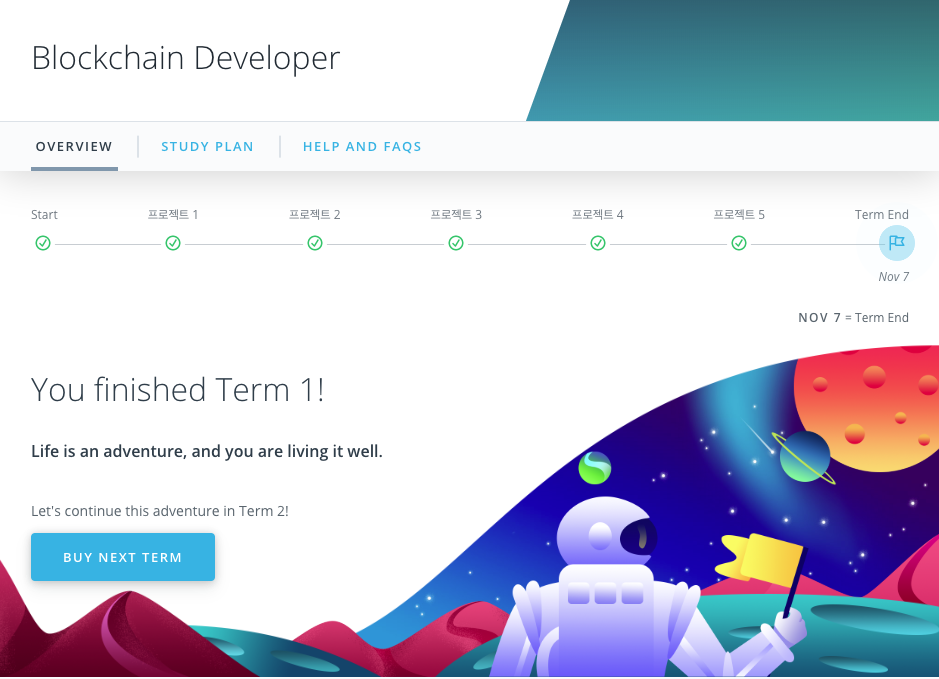Udacity Blockchain Developer Nanodegree
Project: Private Blockchain
Building Your Own Private Blockchain
In this course, you learned all about blockchain and transaction data models as well as the differences between public and private blockchains. In this project you will put this knowledge to practice by creating your own private blockchain. However, this current model has some flaws in saving, persisting, and validating data. Your challenge in this project is to refactor your private blockchain to securely handle this information.
Project: Build Blockchain Notary Service
Build a Private Blockchain Notary Service!
In this project, you will build a Star Registry Service that allows users to claim ownership of their favorite star in the night sky.
What will you need to do?
Create a Blockchain dataset that allow you to store a Star (You should have this done in Projects 2 and 3)
- The application will persist the data (using LevelDB).
- The application will allow users to identify the Star data with the owner.
Create a Mempool component
- The mempool component will store temporal validation requests for 5 minutes (300 seconds).
- The mempool component will store temporal valid requests for 30 minutes (1800 seconds).
- The mempool component will manage the validation time window.
Create a REST API that allows users to interact with the application.
- The API will allow users to submit a validation request.
- The API will allow users to validate the request.
- The API will be able to encode and decode the star data.
- The API will allow be able to submit the Star data.
- The API will allow lookup of Stars by hash, wallet address, and height.
Project: Ethereum Decentralized Star Notary
For this project, you will create a DApp by adding functionality to your smart contract and deploy it on the public testnet. To do so, you'll employ your blockchain identity to secure digital assets on the Ethereum platform using a smart contract. You will get to practice your knowledge of the basics of Solidity.
Previously, you learned to create your own private blockchain web service. In this course, you migrated your private blockchain functionality to a smart contract and created your own ERC721 non-fungible token contract!
Part 1
Write a smart contract with functions to support proof of existence (i.e. notarization)
Part 2
Test smart contract code coverage
Part 3
Deploy smart contract on a public test network (Rinkeby)
Part 4
Modify client code to interact with a smart contract
Optional
Configure RESTful API endpoint to return a registered star
